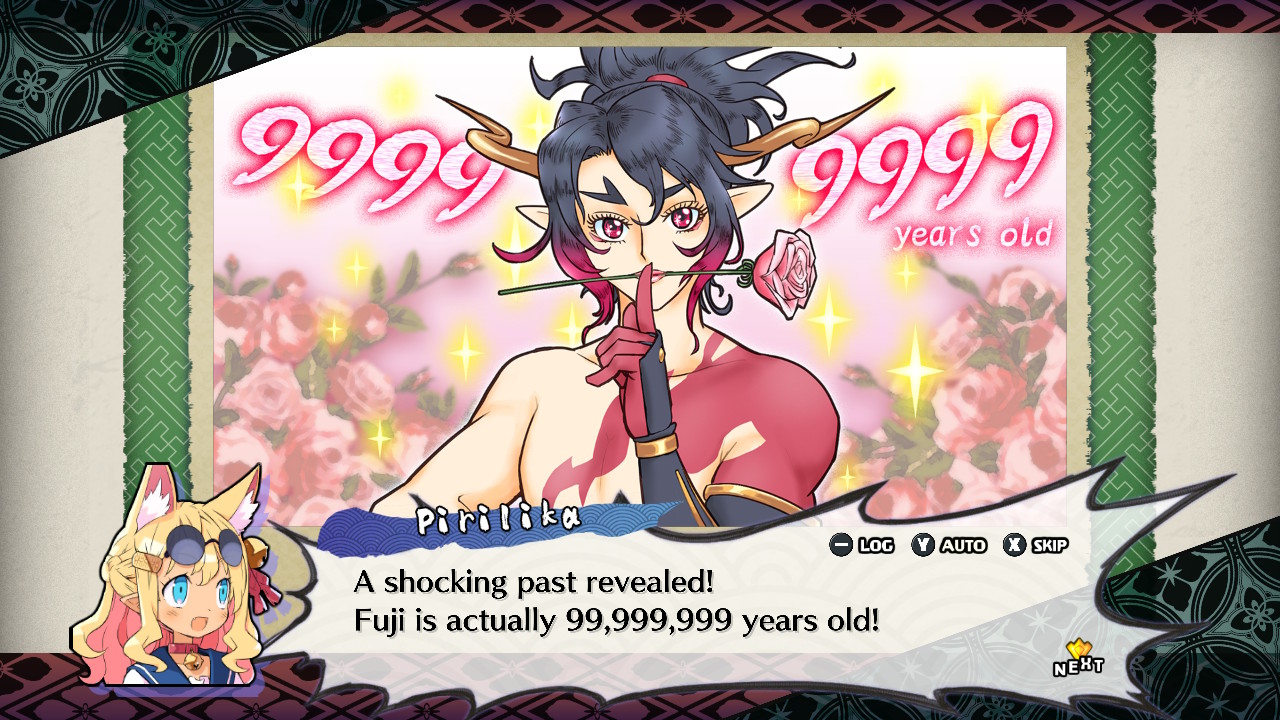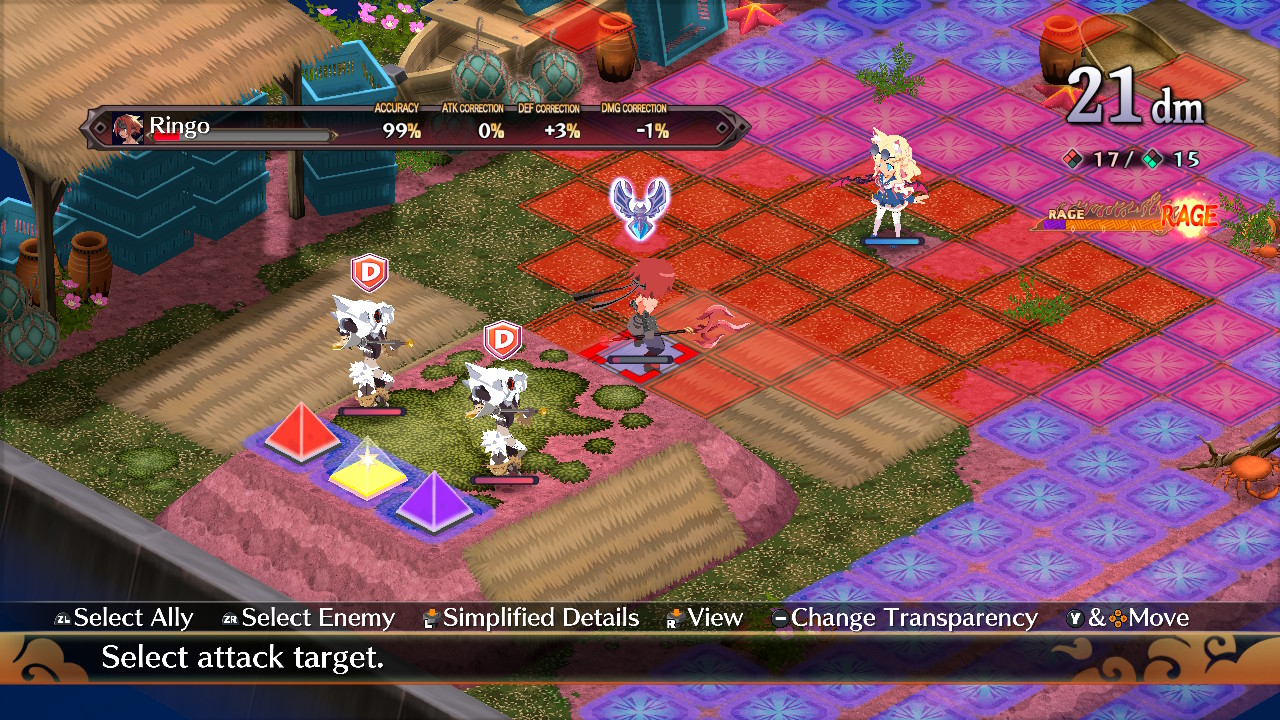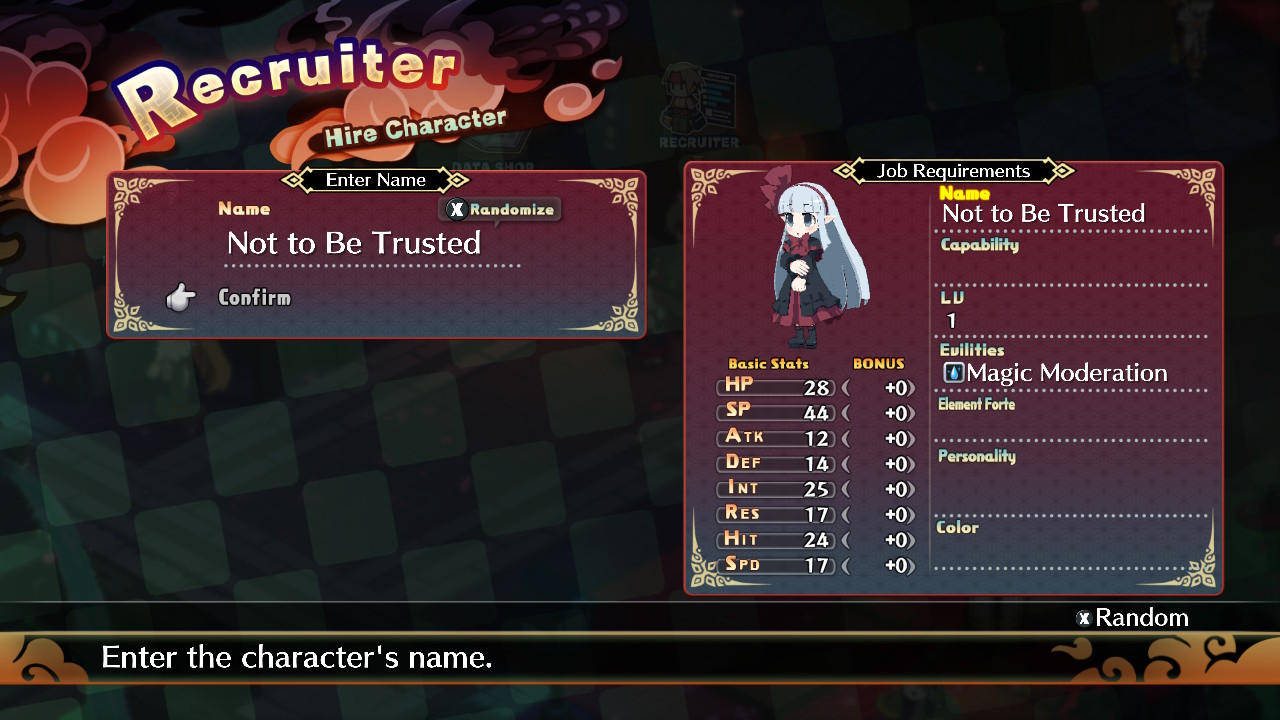System: Switch
Release date: October 3, 2023
Developer: Nippon Ichi Software
Publisher: NIS America
Disgaea games have always been a bit overwhelming. Their nonsensical plots, zany casts, and seemingly impenetrable walls of systems upon systems that have stats going into the millions and damage into the quadrillions can make them seem unapproachable to newcomers at the best of times. Disgaea 7: Vows of the Virtueless, the latest in the long-running series, shares the same foibles as its predecessors to varying degrees, but is by far the most accessible game in the series to date, and is an easy recommendation to make for anyone looking to sink their teeth into an experience that never takes itself too seriously but offers strategic depth easily on par with the best the genre has to offer.
Disgaea 7 follows Fuji, a demon obsessed with money and apparently very little else. His quest for riches has him run afoul of Pirilika, an extremely wealthy otaku with an obsession for Bushido, who has come to the Netherworld of Hinomoto to experience its culture firsthand only to find that its denizens have long since abandoned it thanks to the shogun and his magistrates. After Fuji bonds with one of the legendary Seven Founding Weapons that she just so happens to be carrying around in her bag, the two of them team up to collect the other six weapons, defeat the shogun, and ultimately restore Bushido to Hinomoto. Or, in Fuji’s case, get paid for his troubles and put this whole mess behind him, because he didn’t read the fine print on the contract before he signed it.
Like its predecessors, Disgaea 7’s story is a light-hearted affair that is packed with references to anime and video games, stars a cast of ridiculously quirky characters bursting with personality, and has a general aversion to any kind of seriousness outside of one or two very rare moments which have all the more impact for being so different in tone from the rest of the dialogue, and are flawlessly brought into line as characters will conclude by making the most ridiculously dramatic statements possible. The story progresses smoothly from chapter to chapter, being told in scenes between combat stages in bitesize, easily digestible chunks, and introduces new characters at a steady pace. There is perhaps a little less character development here than previous entries in the franchise, but each of the main party members stands out as unique and gets around this by sheer force of personality to varying degrees of effectiveness: some characters you’ll like, others you won’t, and they’ll do little over the course of the game to change that first impression. But each comes with an overwhelming level of enthusiasm that makes it difficult not to empathize with them in some small way, and complements the rest of the party to make for some interesting and often highly entertaining dialogue.

Disgaea 7 is a grid-based strategy RPG, although describing it this way feels like a gross oversimplification. You can certainly play it the same way you would any other game in the genre by taking your core cast of characters (and maybe a few generic NPC classes if you were of a mind to) and deploying them from your base panel, running through each stage and attacking your enemies for the win, but there is so much depth and variety to its supporting systems that it feels like a disservice to the game to describe it this way. There are dozens of other systems present that returning players will recognize and newcomers would find daunting and incomprehensible if I were to sit and systematically go through and try to summarize each, and they form a rich, interconnected tapestry of gameplay that has a surprising amount of flexibility that, once it all comes together, is immensely satisfying to explore and then to exploit. This is a game designed to let you easily build your characters, and there are so many ways to do it that despite the overwhelming grind it requires, it’s actually very difficult to get bored. If you’ve had enough of gaining levels, you can enhance your weapons in the Item World instead, for example. Over time you’ll naturally accumulate resources for the Juice Bar, which you can then give to your characters for an additional boost. Everything that you do in Disgaea 7 will indirectly help you to accomplish something else, so there is never any effort wasted or directed at a single task.
The game brings its own new ideas to the series too, with the two most prominent ones being Hell Mode and Jumbification. Hell Mode can be activated after killing enemies on the stage, and allows you to unleash special moves that deal significantly more damage than the norm in spectacular fashion. Jumbification sees characters grow to enormous size off the stage, granting them increased stats and wider ranged attacks. Of the two I found Hell Mode to be the more satisfying, as it tied in perfectly to the game’s dramatic flair, and made short work of bosses. Jumbification I tended not to activate after discovering that it tended to prompt enemies to utilize it in response, and mine would wear off sooner, forcing me to traipse to the edge of the stage – while being continually pummeled – so I could finish off the enemy if I didn’t clear the stage beforehand. But there is something to be said for seeing a giant Prinny towering over the edge of a stage, and it perfectly fits the crazy nature of the game. The Item World has also been completely overhauled to be much more manageable, with the number of floors cut down to a maximum of 30, and Item Reincarnation being the new method for improving weapons over the long-term, with Properties adding passive boosts that are much easier to obtain and more accessible than Innocents, which return on a smaller scale. As a long-time fan of the series, this is the change that I appreciated the most, because it breaks down the grind for building better gear into more manageable chunks without sacrificing any of its depth.

Although Disgaea 7 incorporates many of the divisive changes that Disgaea 6 brought to the franchise, it adopts a more back to basics approach. Levels have thankfully returned to a more manageable cap of 9999, making the process of leveling feel more meaningful and less daunting. There are a larger number of classes, although many of these are male and female variants of the same role (i.e. the female Cleric and the male Clergy) with small differences in starting stats and evilities being the only thing that really distinguishes them. Auto-battle makes a return but now has a resource cost in the form of Poltergas, which you accumulate by clearing stages manually. This is a huge improvement in my opinion because it makes the process feel more like a supporting system, rather than the mandatory crutch that it was in Disgaea 6. It’s a good compromise that helps those who would prefer not to grind gain levels more quickly, and doesn’t devalue the effort it takes to gain levels and resources manually.
But despite this Disgaea 7 is extremely accessible for newcomers, and for a grind-intensive, stat-heavy game, the story actually requires very little engagement with its finer points to get through comfortably. The game introduces new gameplay mechanics gradually as you progress but never requires you to engage with them past the initial tutorial, which is presented as a few pages of very basic information at most. Stages are generally short, and the level curve feels like it was designed for players who would only want to use the main cast of characters and won’t engage with other systems to give them an edge. The new Hell Mode and Jumbification mechanics mean that you could likely play through the game stage-by-stage without ever needing to grind at all as long as you didn’t have too large of a party and were strategic with your moves: although the game encourages brute-forcing your way through stages and makes it very easy to do so, it isn’t a requirement.

However, Disgaea games are somewhat infamous for their expansive postgame content, and Disgaea 7 is no exception to this. The story is a very small part of the experience, and if you intend to play the game beyond this then it becomes practically mandatory to engage with all of its systems, which can be overwhelming if you’re unfamiliar with the series. “Grind” is a word that has a lot of negative connotations when it comes to video games, and outside of its story Disgaea 7 is all about the grind. There is an unavoidable time investment in this, with HL in particular being quite scarce in the early stages of the game, and this can be quite off-putting until you’ve gotten into the flow of the game and can accumulate resources more quickly.
The game rewards you handsomely for your efforts with mind-boggling numbers (although not so out of control to the point that they become meaningless, as was the case with its predecessor) but this is definitely an acquired taste and something those unfamiliar with the series will want to keep in mind: although the story is an entirely self-contained and fairly satisfying experience, it’s a tutorial that does little to prepare you for the rest of the game. If you want to experience everything Disgaea 7 has to offer it requires a lot of preparation, which will mean doing the same maps over and over to gradually build up strength and resources. The payoff is immensely satisfying, but getting there takes time.

Like its predecessor, Disgaea 7 features 3D models, which I think is a visual style that lends itself well to the series’ anime aesthetic and inspirations, although I do feel that the HD sprites from the fourth and fifth entries gave it a more striking style. But special attacks are suitably grandiose and dramatic, and the game explodes (often literally) onto your screen with bright and crisp visuals, especially on the Switch OLED. There are two modes, Graphics and Performance, and things are slightly sharper in Graphics mode as you might expect, and this is the game’s default setting. There is little need to switch to Performance mode, because the game runs fantastically on the Switch: at no point did I experience noticeable drops in the frame rate, even with animations sped up. The only slight point of note is the occasional delay between ending your turn and enemies moving when their turn starts as the game processes their moves, although this is never longer than two or three seconds at most, and there is no delay that follows once enemies have moved.
Disgaea 7’s sound design is excellent, delivering a fusion of traditional Japanese instruments and heavy rock and metal that blasts your eardrums with reckless abandon, infusing its scenes and combat with energy. The old familiar tracks make a welcome return alongside this, making the story scenario feel new and fresh, but the simple acts of shopping for items feel nostalgic as the RosenQueen Netherworld Branch theme plays its delightfully catchy jingle once again. The game is fully voiced in both English and Japanese, and I found the English dub to be on par with previous entries in the series, with lines delivered with emotion and enthusiasm. There is a lot of it as well; one of the flaws of many modern anime-style games is to have only a partial dub when compared to the Japanese voice acting, but this is thankfully not the case here, meaning if English dub is your preference the game will cater to your taste on an equal level.
The Verdict

Disgaea 7: Vows of the Virtueless is a game that doesn’t know the meaning of the word “restraint” and will pull you in without hesitation or mercy, whether you’re just looking to dip your toes into its light-hearted story, or go all-in on its postgame and lose hours to the grind. It presents itself as an approachable starting point for newcomers without compromising the depth that epitomizes the series. Few games these days come with as much personality, depth, or content as this one does, and it’s a welcome return to form for the franchise that I cannot recommend highly enough for newcomers or series veterans. With a free demo available on the eShop too, this is one that should definitely be on your radar.
Disgaea 7: Vows of the Virtueless copy provided by the publisher for the purposes of this review.